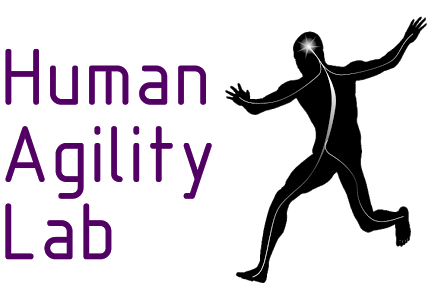
Active Areas of Research

Amplify Gait to Improve Locomotor Engagement in Spinal Cord Injury (AGILE SCI) Trial
Gordon, Shafer, Cornwell, Kahn, Brazg, Henderson, Bostedt
Improving dynamic balance after incomplete spinal cord injury iSCI) is very challenging because sensory-motor impairment limits the nervous system’s capacity to detect movement errors. Error detection is necessary for updating the nervous system’s internal model to correctly relate motor commands to their resulting movement. On a step-by-step basis, an internal model that poorly predicts motion limits the nervous system’s ability to anticipate predictable balance challenges during gait (i.e. periodic body motion). As such, individuals with iSCI often select passively strategies (e.g. wide steps) that maintain dynamic balance with minimum requirements from the nervous system to anticipate ongoing balance demands. These passive strategies are inflexible, inefficient, and limit walking speed. Experimental interventions that amplify self-generated movements (e.g. error augmentation) may accelerate motor learning by augmenting sensory-motor feedback [15] and thus allowing the impaired nervous system to identify otherwise imperceptible errors. Such interventions could enhance dynamic balance by recalibrating the internal model to better predict COM motion. We have developed a cable-driven robot that creates a movement amplification environment by applying a continuous viscous force field to the pelvis that is proportional in magnitude to a participant’s real-time COM velocity. The purpose of this clinical trial is to investigate if locomotor training performed in a movement amplification environment can effectively improve dynamic balance and increase participation in walking activities of individuals with iSCI. We will conduct a two-arm parallel-assignment intervention. Participants will be randomized into either a Control group receiving locomotor training or an Experimental group receiving locomotor training performed in a movement amplification environment. All participants will receive 20 training sessions. We will assess changes in dynamic balance using clinical outcome measures and a quantitative laboratory test we developed to measure capacity to control COM motion during walking.
This project is currently recruiting participants. If you would like to participate, please see our recruitment flyer here.
The effect of speed on maneuvers in force field environments with iSCI
Gordon, Brown, and Cornwell
The goal of this VA-funded study is to better understand maneuverability of people with incomplete spinal cord injuries, specifically at faster speeds. Using our Agility Trainer, we apply velocity-dependent force fields (amplification and damping) to a participant’s center of mass while they are walking on the treadmill at either their preferred walking speed or a faster speed, which is calculated based on clinical test results. After 200 steps of straight walking in one of the fields (amplification, damping, or null), they are tasked to perform 12 side-to-side maneuvers in lanes that are projected onto the treadmill. Using their kinematic data from 6 trials (3 field conditions repeated for the 2 speeds), we plan to analyze various gait metrics and their maneuverability compared to control participants’.
Ankle-Foot Prosthesis Stiffness Optimization to Reduce Gait Compensations
Shorter and Gordon, in collaboration with Elliott Rouse (Michigan)
Stiffness is a key feature of modern prostheses, affecting center of mass mechanics, metabolic cost, energy return, and sound-side knee flexion. In order to understand the benefit of new technologies that can vary stiffness between steps, we must analyze how changes to stiffness effect biomechanics and mobility. The purpose of this study is to identify an optimal prosthetic ankle-foot stiffness that will maximize the ability to perform common, non-steady-state ambulatory tasks and minimize the required compensatory contributions from other lower limb joints. The results could inform clinical prescription guidelines and improve future prosthesis designs.
Knee osteoarthritis gait retraining with real-time visual feedback
Cornwell and Gordon in collaboration with Allison Chang
People with knee osteoarthritis exhibit greater peak knee adduction moments (KAMs), so the goal of this training study is to reduce participants’ KAM. During 6 weeks of training on the split-belt treadmill, participants will receive real-time feedback of their peak KAM and practice different walking strategies to reduce it. Both before and after the training sessions, we will record and analyze the data collected from their normal walking over ground on force plates and on the split-belt treadmill. In addition to peak KAM, we will evaluate other gait metrics such as knee flexion moment, knee angle, KAM impulse, and clinical test measures.
Gaze Behavior during Locomotion
Cates and Gordon
Gaze behavior, where you look when you complete a task, is an important role in motor planning, particularly in regards to walking. Elite athletes and clinical populations both have different gaze behaviors that the average adult, suggesting that these changes are an important part of motor skill development. This project aims to test the role of gaze behavior in a motor learning stepping task. By tracking the changes in gaze and motor skill, we hope to better understand the roles that gaze and vision play in motor skill development.
We are currently recruiting for a study as part of this project. You can learn more and volunteer to participate here

Lower Extremity Workspace and Control of Leg Swing in Stroke
Dragunas and Gordon
Individuals with neurological injuries, such as chronic stroke, often display aberrant control of their limbs through compensatory movements. This project hopes to quantify how these individuals control the trajectory of their swinging limb and subsequently determine the relationship between kinematic workspace constraints, foot placement, and dynamic balance.



